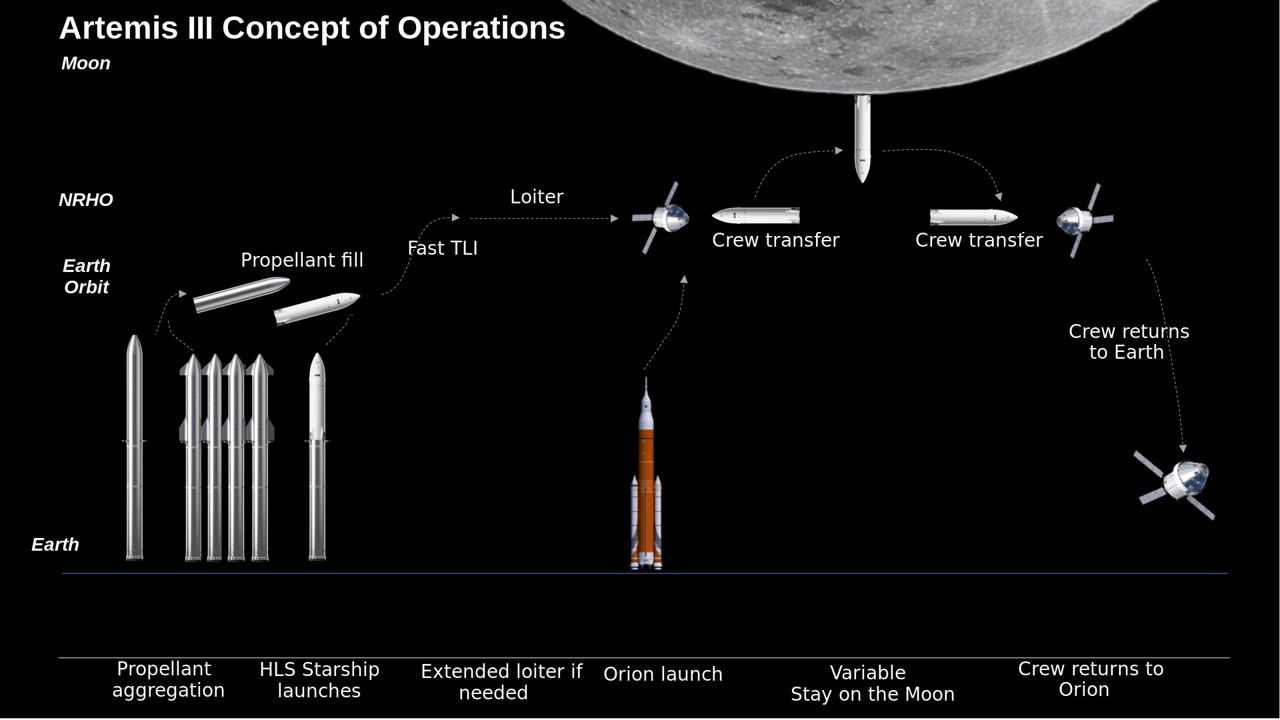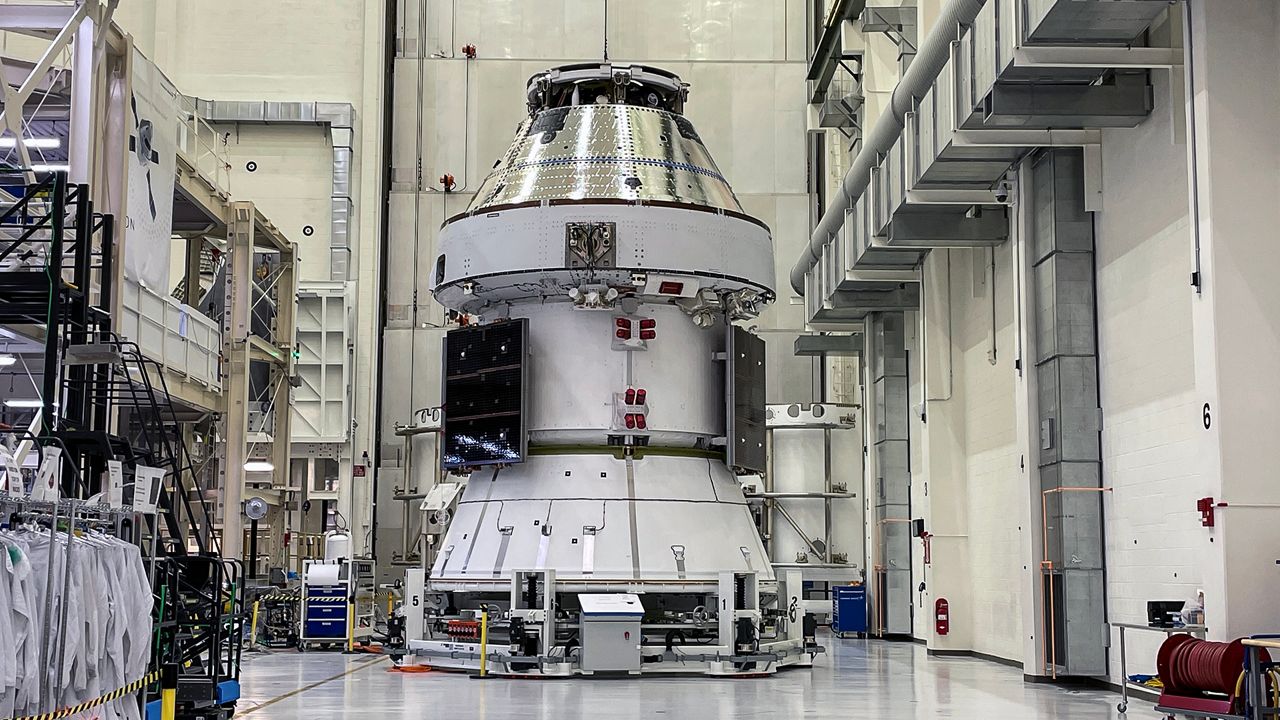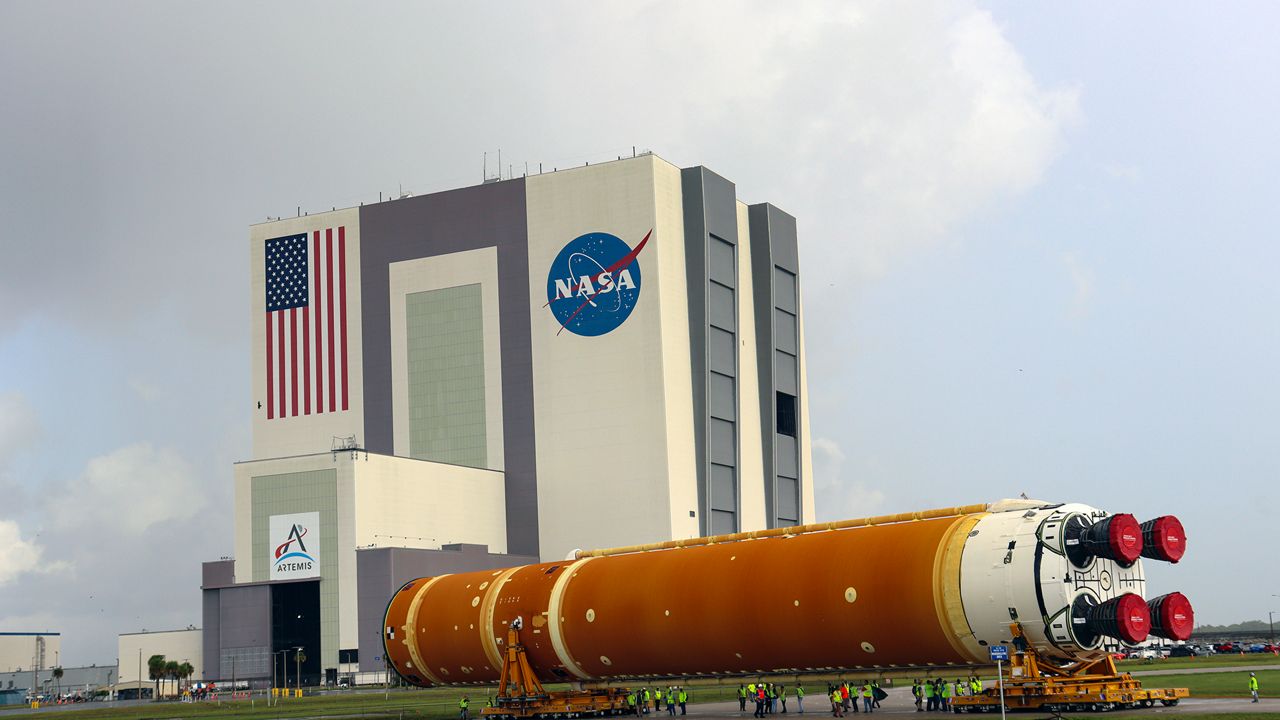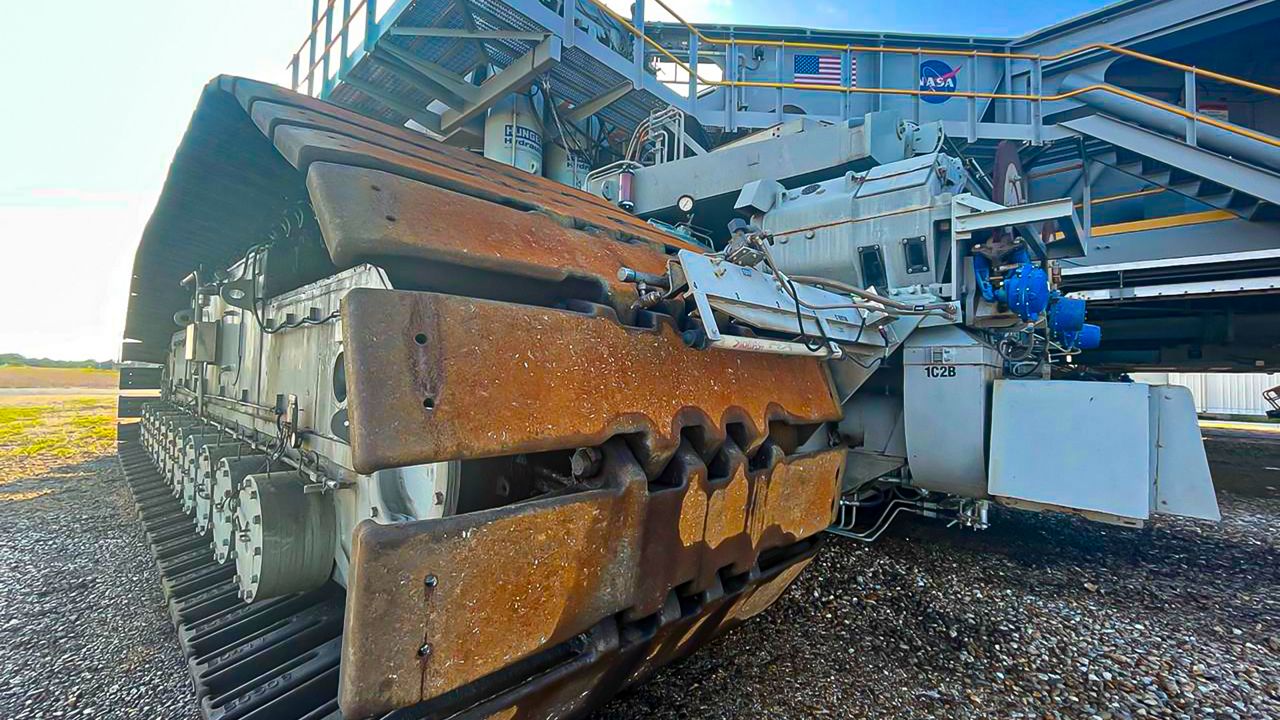KENNEDY SPACE CENTER — NASA Administrator Bill Nelson announced on Tuesday afternoon that the Artemis II mission, which was slated to launch in November of this year and take people back for an orbit around the moon, has been delayed.
What You Need To Know
- NASA is aiming for next year for the Artemis II mission
- The Artemis III mission has also been pushed back to 2026
Nelson said NASA is aiming for September 2025 for the crewed Artemis II mission, which will see people orbit the moon.
Nelson said the crew — commander Gregory Reid Wiseman, pilot Victor Glover, mission specialist Christina Koch and Canadian Space Agency mission specialist Jeremy Hansen — are still training for the first human visit to the moon in more than 50 years.
The Artemis III mission has also been pushed back, from 2025 to 2026, revealed Nelson.
Safety to astronauts is ‘top priority’
In a teleconference with both NASA and space industry officials, a series of reasons were given as to why the launch has been pushed back, which some stem from the Artemis I mission, which was a test run of the new 322-foot-tall Space Launch System rocket and Orion as the spacecraft went around the moon and back.
One issue was the heatshield on the Orion spacecraft, explained Amit Kshatriya, deputy associate administrator of Exploration Systems Development.
Once NASA recovered Orion in its December 2022 splashdown, engineers wanted to find out how well the craft’s 1,300 thermal protection system tiles protected it from the coldness of space to the extreme heat of re-entry.
As Orion returned to Earth, it was moving at about 25,000 mph and the nearly 11-foot-tall craft experienced temperatures of about 5,000 degrees Fahrenheit.
Kshatriya said on Tuesday NASA specialists discovered an “unexpected phenomenon”; char layer pieces from the heat shield, which are currently being tested to understand what happened.
He said small chunks came off and wishes they were bigger so it would be easier to test.
But both he and Tonya Ladwig, vice president human space exploration and Orion Program manager at Lockheed Martin, stressed that if a human crew was inside the spacecraft during the splashdown, that they would be OK and not in any danger.
Lockheed Martin received the contract to build the Orion.
Still, Kshatriya said that NASA teams want to make sure the heat shield is working and they understand the performance of the re-entry Earth and the cause of the charring before going forward with the crewed Artemis II mission.
Another issue that came up is the integrated abort system, where if something goes wrong with the SLS rocket during launch, the Orion spacecraft (where the crew will be) can separate from the rocket and land safely back down to Earth with parachutes.
During the investigation of the abort system, a few cases of deficiencies in the performance of the electrical system, like some of the batteries, were discovered, said Kshatriya, who is also the manager of NASA’s Moon to Mars Program Office.
The NASA team is looking at different ways to test these issues and ensure the crew’s safety.
Another issue came up with the life support system for the Artemis program. Some components passed acceptance testing for the Artemis II mission but did not pass for the Artemis III mission.
“When we examined it, we recognized there is a design flaw in that circuit. Those valve electrics affect many parts of the life support system on the spacecraft, in particular the CO2 scrubbing system,” Kshatriya explained, adding the hardware was unacceptable and it will be replaced and tested.
Nelson stressed the importance of taking time to going back to the moon and doing things the right way.
“We are returning to the moon in a way we never have before, and the safety of our astronauts is NASA’s top priority as we prepare for future Artemis missions,” he said.
NASA Associate Administrator Jim Free echoed the same feeling.
“We will launch when we are ready,” he said.
Going Beyond Artemis II
Artemis III, which will now happen on September 2026, will see the first woman and person of color on the moon.
How it will happen is with SpaceX’s Starship. The crew will travel to the moon in an Orion spacecraft and dock with the Starship. Once two members board the Starship, it will undock with the Orion, land on the moon and eventually redock with the Orion.

Jessica Jensen, SpaceX’s vice president of Customer Operations and Integration, said during the teleconference that the California-based company is waiting for the FAA to give its green light for the Starship’s third launch attempt.
In a second test flight in November 2023, SpaceX was forced to blow up the Starship.
If all goes well, between the Artemis II and Artemis III missions, an uncrewed Starship will attempt to land on the moon as a test.









